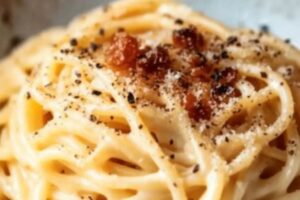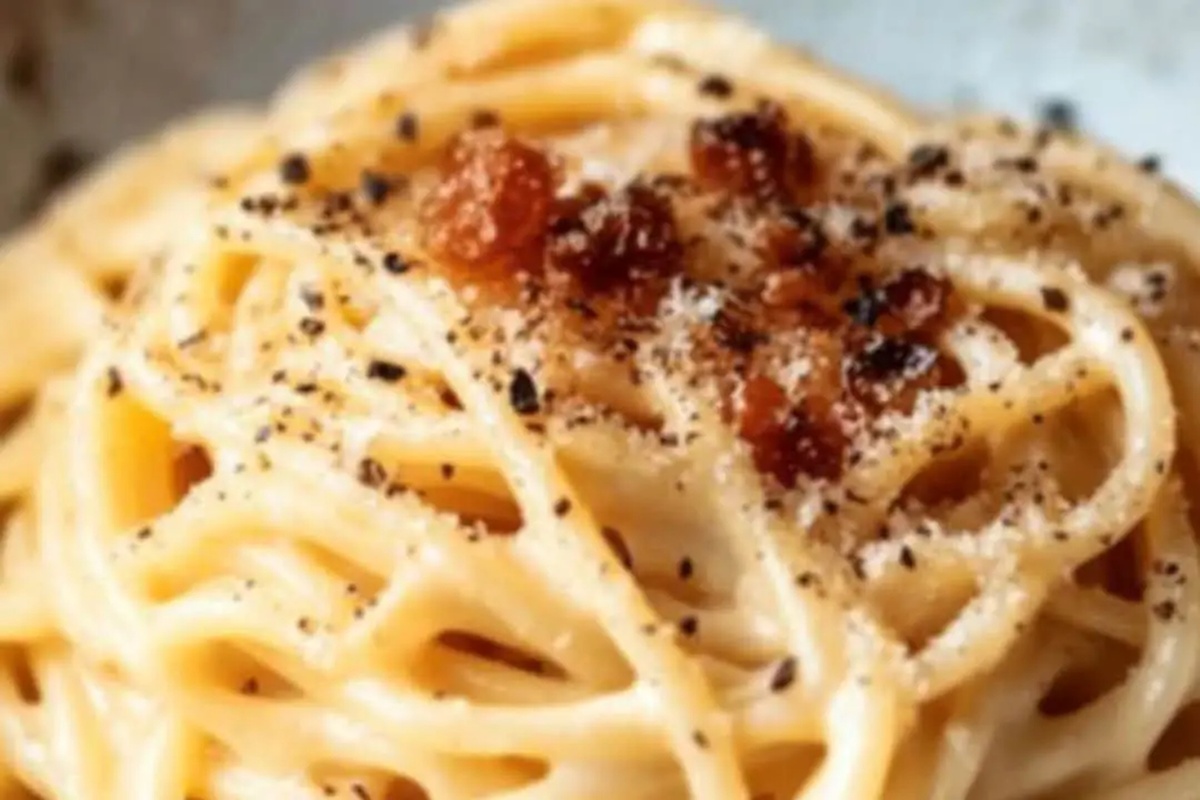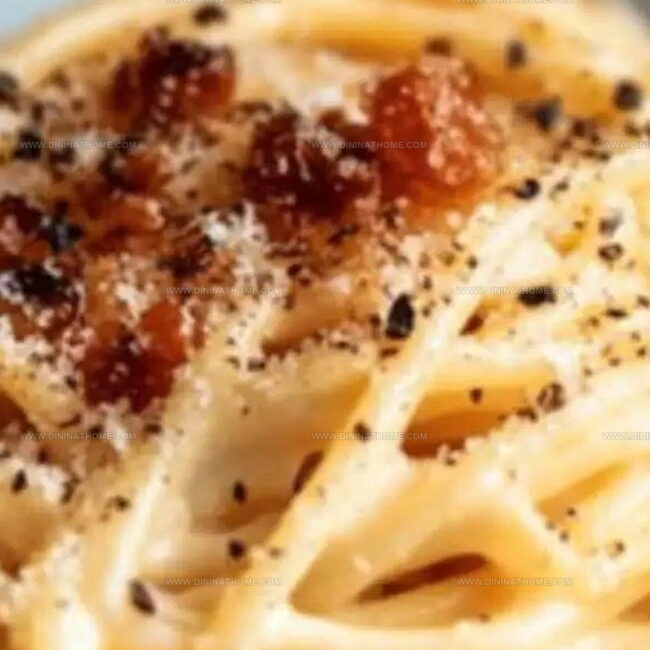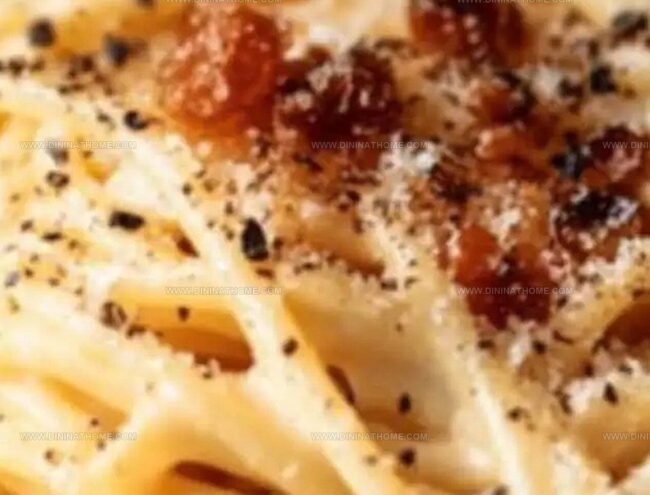Luscious Classic Carbonara Recipe That Everyone Adores
Pasta lovers often debate the authentic classic carbonara recipe that originated in rome.
Culinary enthusiasts recognize this dish as a true italian masterpiece requiring minimal ingredients.
Creamy eggs blend perfectly with crispy pancetta, creating a luxurious sauce that coats each strand of spaghetti.
Professional chefs insist on using pecorino romano for that signature sharp flavor.
Simple techniques make this traditional recipe shine with incredible depth and richness.
Regional cooks have passed down generations of secrets to achieving the most silky, decadent sauce.
Let’s uncover the magic behind this exceptional roman specialty that will make you feel like a true italian cook.
Classic Carbonara Known for Its Creamy, Satisfying Taste
Rapid Weeknight Savior: Whip up this classic Italian dish in just 20 minutes, perfect for busy home cooks craving a restaurant-quality meal without complex preparation.
Authentic Flavor Explosion: Experience the traditional Roman recipe with minimal ingredients, showcasing how simple components like guanciale, eggs, and cheese create an incredibly rich and creamy pasta experience.
Minimal Ingredient Magic: Requires only 5-6 pantry staples, making this carbonara an accessible recipe for cooks of all skill levels who want maximum flavor with minimal shopping and effort.
Technique-Building Masterpiece: Learn classic Italian cooking techniques like creating a silky sauce without cream, mastering egg tempering, and achieving the perfect pasta texture – all in one delicious lesson.
Everything for Crafting Classic Carbonara
Main Ingredients:
Pasta Base:Protein Components:Cheese and Seasoning:Additional Components:Carbonara Pasta Classic Cooking Directions
Step 1: Boil Pasta Perfectly
Fill a large pot with water and add a generous pinch of salt.
Bring the water to a rolling boil.
Drop in the pasta and cook until it reaches that perfect al dente texture.
Scoop out a cup of pasta water before draining the pasta in a colander.
Step 2: Crisp Up the Pork
Heat a spacious skillet over medium flame.
Toss in the guanciale and let it sizzle.
Watch as the meat transforms, releasing its rich fat and turning gloriously crispy.
This should take about 5-6 minutes.
Keep the golden fat in the pan.
Step 3: Whip Up the Silky Sauce
Grab a mixing bowl and crack in the eggs and extra egg yolk.
Sprinkle in the grated Pecorino Romano cheese and add a generous grinding of black pepper.
Whisk everything together until the mixture looks smooth and well-combined.
Step 4: Marry the Pasta and Pork
Transfer the cooked pasta into the skillet with the crispy guanciale.
Toss the pasta around, ensuring it gets a delicious coating of the rendered fat.
Step 5: Create the Magical Cream
Pull the skillet off the heat.
Pour the egg mixture over the pasta, then use swift, vigorous motions to coat every strand.
The residual warmth will gently cook the eggs, creating a luxurious, silky sauce.
If the sauce seems too thick, splash in reserved pasta water, one tablespoon at a time, until you reach the perfect creamy consistency.
Step 6: Serve and Devour
Plate the carbonara immediately.
Shower the top with extra Pecorino Romano and a final sprinkle of freshly cracked black pepper.
Enjoy while it’s hot and gloriously creamy!
Classic Cooking Tips for Carbonara Pasta
Classic Carbonara Storage
Delicious Add-Ons for Classic Carbonara
Classic Carbonara Pasta Takes
FAQs
Guanciale is cured pork cheek, traditionally used in carbonara. If unavailable, pancetta or thick-cut bacon can work, but the flavor will be slightly different.
Removing the skillet prevents eggs from scrambling. The residual heat gently cooks the eggs, creating a silky, creamy sauce without turning them into dry, chunky pieces.
The sauce should coat the pasta smoothly, looking glossy and creamy. Adding reserved pasta water helps achieve the perfect texture – not too thick or thin.
Pecorino Romano is traditional and provides a sharp, salty flavor. While Parmesan can work, Pecorino gives the most authentic Roman carbonara taste.
Print
Classic Carbonara Recipe
- Total Time: 20 minutes
- Yield: 4 1x
Description
Rich Italian pasta classic carbonara brings creamy Roman tradition straight to your kitchen. Silky egg-coated noodles dance with crispy pancetta, creating a simple yet luxurious meal you’ll crave again and again.
Ingredients
Main Protein:
- 3 large eggs
- 1 large egg yolk
- 150 grams (5 ounces) guanciale or pancetta, diced
Pasta:
- 400 grams (14 ounces) spaghetti or rigatoni
- Salt, for pasta water
Cheese and Seasoning:
- 1 cup (100 grams) Pecorino Romano cheese, finely grated
- 1 teaspoon freshly cracked black pepper
Instructions
- Bring a generously salted large pot of water to a rolling boil, then cook the pasta until it reaches a perfect al dente texture. Carefully set aside one cup of the starchy cooking liquid before draining the pasta thoroughly.
- Heat a spacious skillet over medium flame and render the guanciale, allowing it to transform into crispy, golden-brown morsels. This process should take approximately 5-6 minutes, releasing its rich, savory fat into the pan.
- In a separate mixing bowl, whisk the eggs and additional egg yolk until they become silky smooth. Incorporate the grated Pecorino Romano and a generous grinding of black pepper, blending until the mixture achieves a uniform consistency.
- Transfer the freshly cooked pasta directly into the skillet with the crisp guanciale, ensuring each strand is luxuriously coated with the rendered fat.
- Immediately remove the skillet from the heat source. Pour the prepared egg mixture over the pasta, employing vigorous tossing techniques to create a luscious, creamy sauce. The residual warmth will gently cook the eggs without scrambling them.
- Gradually introduce the reserved pasta water, one tablespoon at a time, to achieve the perfect sauce consistency – smooth, silky, and clinging delicately to each pasta strand.
- Plate the carbonara with artistic flair, garnishing with an additional sprinkle of Pecorino Romano and a final flourish of freshly cracked black pepper. Serve piping hot to capture the dish’s ultimate essence and texture.
Notes
- Prep guanciale carefully to extract maximum flavor, ensuring it’s crispy but not burnt, which can make the dish bitter.
- Use room temperature eggs to prevent scrambling and achieve a silky, smooth sauce that coats pasta evenly.
- Reserve pasta water strategically, adding gradually to create a perfectly creamy consistency without diluting the rich egg mixture.
- Consider vegetarian alternatives by substituting guanciale with crispy mushrooms or smoked tofu for similar texture and depth of flavor.
- Prep Time: 5 minutes
- Cook Time: 15 minutes
- Category: Dinner
- Method: Sautéing
- Cuisine: Italian
Nutrition
- Serving Size: 4
- Calories: 600
- Sugar: 1g
- Sodium: 800mg
- Fat: 30g
- Saturated Fat: 10g
- Unsaturated Fat: 18g
- Trans Fat: 0g
- Carbohydrates: 70g
- Fiber: 3g
- Protein: 25g
- Cholesterol: 220mg




Emily Harper
Nutrition Consultant & Recipe Analyst
Expertise
Healthy Recipe Modification, Nutritional Analysis & Meal Planning, Global Cuisine & Dietary Adaptations
Education
School: French Pastry School, Chicago, IL
Program: L’Art de la Pâtisserie
Focus: Intensive training in traditional French pastry techniques, baking theory, and confectionery arts.
Emily’s journey started in a pastry kitchen but took a detour into the world of health and flavor science.
Graduating from the French Pastry School and studying nutrition opened her eyes to a new mission: making healthy food taste like something you’d actually crave.
At Dining At Home, Emily’s the go-to for smart, feel-good recipes that don’t trade flavor for nutrition.
She’s all about adding a fresh spin on old favorites and finding small ways to make everyday meals a little brighter.
Outside of the kitchen, Emily is most at home walking forest trails, testing plant-based recipes, or sharing a picnic under a wide-open sky.